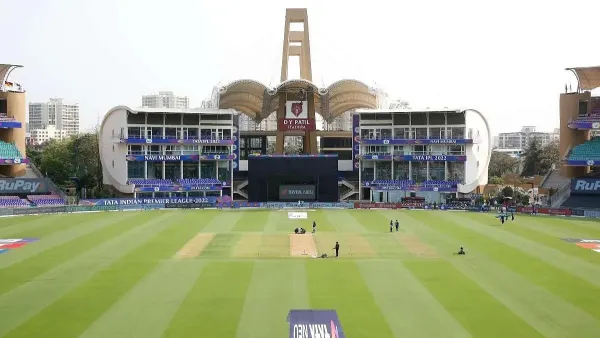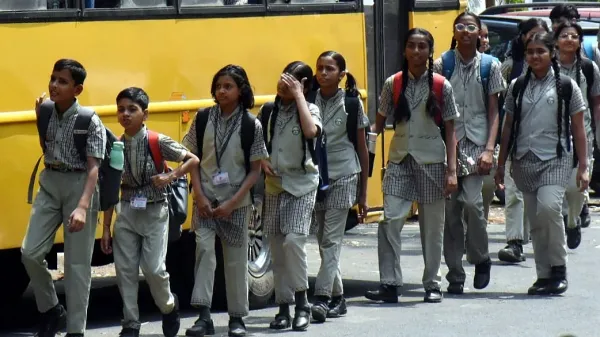
Peace, prosperity, and faith have always been central to Indian civilization, and few texts embody this more than the
Ramayana. The story of Rama is not just a tale of virtue and struggle but a living cultural force that continues to shape Indian traditions even today. From village rituals to national celebrations, the Ramayana has given birth to festivals that remind society of righteousness, sacrifice, and devotion. Some of these festivals are world-renowned, while others are deeply rooted in local traditions yet share the same divine origin.
1. Diwali – The Return of Rama to Ayodhya
 Lighting a diya is a spiritual moment and a silent dialogue with the Divine, not merely a routine. However, did you realize that your fate can be shaped by the direction you choose Diwali, the Festival of Lights, is perhaps the most famous celebration connected to the Ramayana. Its origins lie in Rama’s return to Ayodhya after 14 years of exile and the victory over Ravana. To welcome their king, the people of Ayodhya lit rows of lamps, symbolizing the triumph of light over darkness and dharma over adharma. This symbolic act has become one of the most celebrated festivals in India, marked by oil lamps, prayers to Lakshmi, and the renewal of prosperity. It signifies not just the joy of Rama’s homecoming but also the cosmic truth that truth and justice ultimately prevail.
Lighting a diya is a spiritual moment and a silent dialogue with the Divine, not merely a routine. However, did you realize that your fate can be shaped by the direction you choose Diwali, the Festival of Lights, is perhaps the most famous celebration connected to the Ramayana. Its origins lie in Rama’s return to Ayodhya after 14 years of exile and the victory over Ravana. To welcome their king, the people of Ayodhya lit rows of lamps, symbolizing the triumph of light over darkness and dharma over adharma. This symbolic act has become one of the most celebrated festivals in India, marked by oil lamps, prayers to Lakshmi, and the renewal of prosperity. It signifies not just the joy of Rama’s homecoming but also the cosmic truth that truth and justice ultimately prevail.
2. Dussehra – The Victory of Rama Over Ravana
 Dussehra, also known as Vijayadashami, is rooted in the episode where Rama defeats Ravana after a fierce battle in Lanka. Effigies of Ravana, along with his brother Kumbhakarna and son Meghanada, are burnt across India to signify the destruction of evil. The festival represents the decisive triumph of righteousness after long struggle. While Navratri preceding Dussehra is often connected with Goddess Durga, the day of Vijayadashami carries profound significance from the Ramayana, commemorating Rama’s divine victory. This dual symbolism makes Dussehra one of the most spiritually layered festivals in India.
Dussehra, also known as Vijayadashami, is rooted in the episode where Rama defeats Ravana after a fierce battle in Lanka. Effigies of Ravana, along with his brother Kumbhakarna and son Meghanada, are burnt across India to signify the destruction of evil. The festival represents the decisive triumph of righteousness after long struggle. While Navratri preceding Dussehra is often connected with Goddess Durga, the day of Vijayadashami carries profound significance from the Ramayana, commemorating Rama’s divine victory. This dual symbolism makes Dussehra one of the most spiritually layered festivals in India.
3. Rama Navami – The Birth of Rama
 Ravana never had to lose, but chose pride instead. Rama Navami is observed to honor the birth of Lord Rama, the seventh avatar of Vishnu, born to King Dasharatha and Queen Kaushalya in Ayodhya. Falling in the month of Chaitra, this festival is marked by recitations of the Ramayana, chanting of the name of Rama, and processions featuring idols of Rama, Sita, Lakshmana, and Hanuman. The celebration is not just about the birth of a prince but about the descent of dharma itself into the world. It is a reminder of Rama’s role as an ideal son, king, and protector of dharma.
Ravana never had to lose, but chose pride instead. Rama Navami is observed to honor the birth of Lord Rama, the seventh avatar of Vishnu, born to King Dasharatha and Queen Kaushalya in Ayodhya. Falling in the month of Chaitra, this festival is marked by recitations of the Ramayana, chanting of the name of Rama, and processions featuring idols of Rama, Sita, Lakshmana, and Hanuman. The celebration is not just about the birth of a prince but about the descent of dharma itself into the world. It is a reminder of Rama’s role as an ideal son, king, and protector of dharma.
4. Hanuman Jayanti – The Birth of the Devotee
 Devotion purifies karma before karma strikes Though Hanuman Jayanti is primarily centered on the birth of Hanuman, its deeper connection lies within the Ramayana. Hanuman was not just a warrior but the very embodiment of devotion to Rama. His birth is celebrated in the month of Chaitra or sometimes in December, depending on regional traditions. Devotees recite the Sundara Kanda, which narrates Hanuman’s leap to Lanka and his role in uniting Rama with Sita. Hanuman Jayanti highlights the idea that devotion and service are as central to dharma as kingship and valor, making this festival an essential extension of Ramayana culture.
Devotion purifies karma before karma strikes Though Hanuman Jayanti is primarily centered on the birth of Hanuman, its deeper connection lies within the Ramayana. Hanuman was not just a warrior but the very embodiment of devotion to Rama. His birth is celebrated in the month of Chaitra or sometimes in December, depending on regional traditions. Devotees recite the Sundara Kanda, which narrates Hanuman’s leap to Lanka and his role in uniting Rama with Sita. Hanuman Jayanti highlights the idea that devotion and service are as central to dharma as kingship and valor, making this festival an essential extension of Ramayana culture.
5. Kartik Purnima and Tulsi Vivah – The Divine Marriage Symbol
 While Kartik Purnima is celebrated for various reasons, one of its associations is with Tulsi Vivah, the ceremonial marriage of the sacred Tulsi plant with Lord Vishnu in the form of Shaligram. In some traditions, this marriage ritual is linked symbolically to the divine union of Rama and Sita. It reflects the Ramayana’s emphasis on sacred marital dharma, the union of the human and the divine, and the sanctity of companionship. Though the direct narrative link is subtle, the cultural memory of Rama and Sita’s wedding continues to echo in this ritual practice.
While Kartik Purnima is celebrated for various reasons, one of its associations is with Tulsi Vivah, the ceremonial marriage of the sacred Tulsi plant with Lord Vishnu in the form of Shaligram. In some traditions, this marriage ritual is linked symbolically to the divine union of Rama and Sita. It reflects the Ramayana’s emphasis on sacred marital dharma, the union of the human and the divine, and the sanctity of companionship. Though the direct narrative link is subtle, the cultural memory of Rama and Sita’s wedding continues to echo in this ritual practice.
6. Rama Leela – The Theatrical Festival of the Ramayana
 Ram as a Father: The Pain of Meeting His Sons Rama Leela is not just a performance but a living festival that transforms towns and villages into stages for the Ramayana. Recognized by UNESCO as part of the intangible cultural heritage of humanity, this tradition dates back centuries. Entire episodes from Rama’s life are enacted, culminating in the burning of Ravana’s effigy on Dussehra. Rama Leela is not merely drama but an annual act of remembrance that passes the values of dharma, loyalty, and justice to new generations. It ensures that the Ramayana is not confined to scriptures but breathed into life through art and community.
Ram as a Father: The Pain of Meeting His Sons Rama Leela is not just a performance but a living festival that transforms towns and villages into stages for the Ramayana. Recognized by UNESCO as part of the intangible cultural heritage of humanity, this tradition dates back centuries. Entire episodes from Rama’s life are enacted, culminating in the burning of Ravana’s effigy on Dussehra. Rama Leela is not merely drama but an annual act of remembrance that passes the values of dharma, loyalty, and justice to new generations. It ensures that the Ramayana is not confined to scriptures but breathed into life through art and community.
7. Pavitrotsav of Sita – Remembering the Trial by Fire
 Exile was no vacation—it was emotional isolation Though lesser known, some traditions observe festivals or rituals remembering Sita’s Agni Pariksha, her trial by fire. Particularly in Mithila (Sita’s birthplace), rituals associated with her purity and sacrifice are performed. These rituals reflect the enduring questions raised by the Ramayana about justice, womanhood, and dharma. Sita’s endurance and resilience are honored through community gatherings, recitations, and folk traditions, reminding society that dharma is not only upheld by kings and warriors but also by women whose strength often defines the moral fabric of civilization.
Exile was no vacation—it was emotional isolation Though lesser known, some traditions observe festivals or rituals remembering Sita’s Agni Pariksha, her trial by fire. Particularly in Mithila (Sita’s birthplace), rituals associated with her purity and sacrifice are performed. These rituals reflect the enduring questions raised by the Ramayana about justice, womanhood, and dharma. Sita’s endurance and resilience are honored through community gatherings, recitations, and folk traditions, reminding society that dharma is not only upheld by kings and warriors but also by women whose strength often defines the moral fabric of civilization.
The Ramayana Is Still Alive in Our CelebrationsThe Ramayana is not just a story to be read but a cultural inheritance that Indians continue to live. Through festivals like Diwali, Dussehra, Rama Navami, Hanuman Jayanti, Tulsi Vivah, Rama Leela, and rituals honoring Sita, the lessons of dharma, devotion, and sacrifice remain alive. These celebrations are not only about memory but also about renewal. They remind us that the ideals of Rama and Sita are not locked in ancient verses but must be reborn each year, in every household, and in every act of righteousness.
The endurance of these festivals proves that the Ramayana is not history in the past tense but a timeless guide. It lives in the rhythm of Indian seasons, the glow of the lamps, the chants of Rama’s name, and the collective will of a people who continue to find strength in its truth.
-
'Neither Rahul Will Become PM, Nor...': Amit Shah Attacks Sonia Gandhi, MK Stalin Over Dynasty Politics

-
ICC Women's ODI World Cup 2025: ICC Replaces Bengaluru With Navi Mumbai In List Of Host Venues

-
Kerala Exempts School Uniforms On Festival Days, Launches New Initiatives For Child Safety And Fitness

-
'On Behalf Of Dogs, I Am Thankful To The Supreme Court': John Abraham Reacts To SC Modifying Its Verdict On Stray Dogs

-
Thunderbolts* OTT Release Date Confirmed: When & Where To Watch This MCU Film Online
